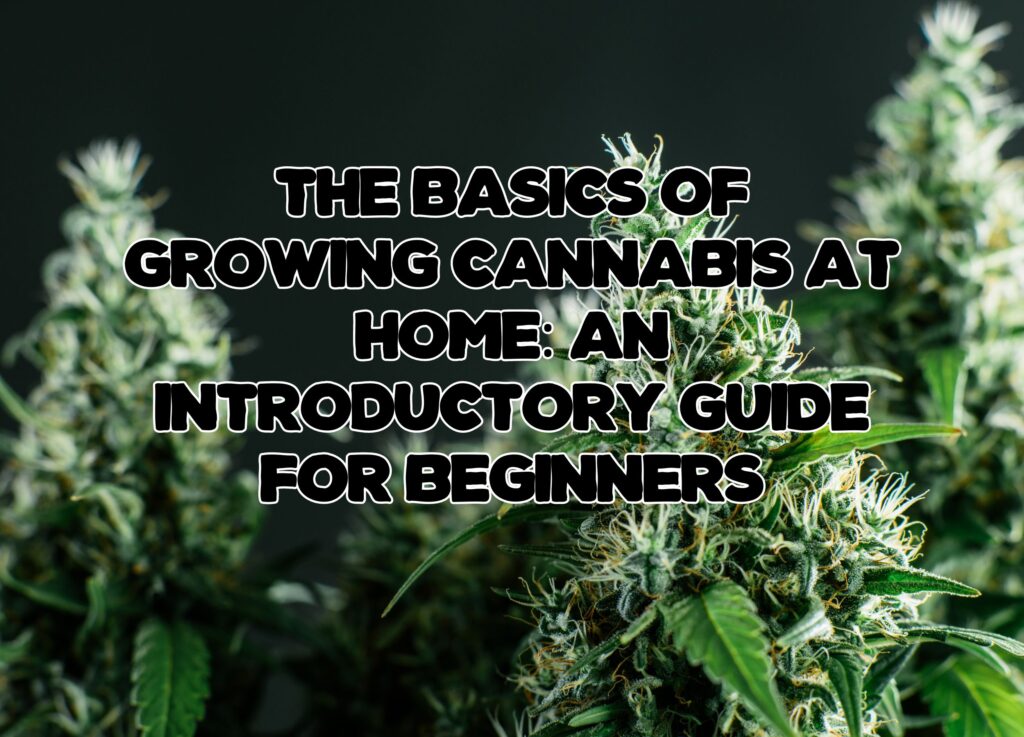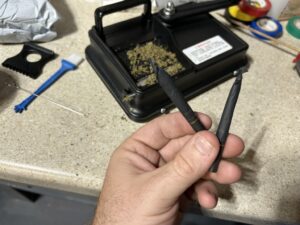Growing cannabis at home can be a rewarding experience, both as a hobby and as a way to produce your own supply of this versatile plant. Whether you’re interested in its medicinal properties or simply enjoy its recreational use, cultivating cannabis can be relatively straightforward if you know the basics. This introductory guide aims to equip beginners with the essential knowledge needed to start their own cannabis garden.
Legal Considerations
Before you start planting, it’s crucial to understand the legal status of cannabis in your jurisdiction. Laws vary by state and country, so make sure you’re aware of the regulations concerning cannabis cultivation, possession, and use in your area.

Choosing the Right Strain
Cannabis comes in various strains, each with its own set of characteristics such as growth patterns, flavors, and effects. The two primary types of cannabis are Indica and Sativa, with numerous hybrids available that combine traits from both. Indica strains are generally easier to grow and are known for their relaxing effects, while Sativa strains are more energizing but can be more challenging to cultivate. Research and choose a strain that suits your needs and skill level.
Indoor vs. Outdoor Growing
Indoor Growing
Growing cannabis indoors gives you more control over the environment, making it easier to manage factors like light, temperature, and humidity. However, it can be more expensive due to the cost of equipment such as grow lights and ventilation systems.
Recommended Equipment for Indoor Growing
- 12 Inch 1560 CFM High Velocity Floor Fan with 3 Powerful Speeds: Proper air circulation is crucial for indoor growing, and this high-velocity floor fan can help maintain an optimal environment.
- 1.5 inch Rockwool/Stonewool Grow Cubes Starter Sheets for Cuttings, Cloning, Plant Propagation, Seed Starting: These starter sheets are excellent for germinating your cannabis seeds and promoting healthy root growth.
Outdoor Growing
Outdoor cultivation is less expensive but comes with its own set of challenges, including pests and unpredictable weather conditions. If you have a suitable climate and are willing to invest the time in plant care, outdoor growing can be a rewarding experience.
Essential Equipment
For Indoor Growing
- Grow lights: LED or HID lights are commonly used.
- Ventilation system: To control humidity and temperature.
- Grow tent or grow room: To contain your plants and equipment.
For Outdoor Growing
- Quality soil: Organic soil with good drainage is essential.
- Fertilizers: Organic or chemical, depending on your preference.
- Pots or garden beds: Depending on your available space.
The Growing Process
Germination
The first step in growing cannabis is germinating the seeds. This can be done by placing them between wet paper towels or directly planting them in soil. It usually takes a few days for the seeds to sprout.
Vegetative Stage
Once the seeds have sprouted, the plants enter the vegetative stage. This is when they need the most light, ideally around 18-24 hours a day for indoor plants. Outdoor plants will depend on natural daylight.
Flowering Stage
After several weeks in the vegetative stage, your plants will enter the flowering stage. This is when they start producing buds. Indoor plants will require a change in light cycle, usually to 12 hours of light and 12 hours of darkness, to trigger flowering.
Harvesting
Knowing when to harvest your cannabis is crucial for maximizing potency. A common method is to examine the trichomes, the tiny, resinous glands on the buds. When they turn from clear to a milky white color, it’s generally a good time to harvest.
Growing cannabis at home can be a fulfilling endeavor, offering both challenges and rewards. With the right knowledge and equipment, even beginners can produce a successful crop. As you gain experience, you’ll find that the process becomes easier and more intuitive, allowing you to experiment with different strains and growing conditions.
Ongoing Care and Maintenance
As your cannabis plants grow, they will require ongoing care and attention to ensure they remain healthy and produce high-quality buds. This includes regular watering, feeding with appropriate nutrients, and monitoring for signs of pests or diseases.
Pest Control
Pests can be a significant issue, especially for outdoor growers. Common cannabis pests include spider mites, aphids, and caterpillars. Organic pesticides or natural remedies like neem oil can be effective in controlling these pests.
Nutrient Management
Cannabis plants require different nutrients during their vegetative and flowering stages. Nitrogen is more critical during the vegetative stage, while phosphorus and potassium become essential during flowering. Overfeeding can lead to nutrient burn, so it’s crucial to follow a feeding schedule and adjust as needed based on your plants’ appearance.
Pruning and Training
Pruning involves removing unnecessary leaves and branches to direct the plant’s energy towards bud production. Techniques like low-stress training (LST) can also be used to maximize light exposure and improve yield.
Monitoring and Adjustments
Regularly check the pH levels of your soil or growing medium, as cannabis prefers slightly acidic conditions. Use a pH meter to ensure levels stay between 6.0 and 7.0 for soil and 5.5 and 6.5 for hydroponic systems. Adjustments can be made using pH up or down solutions.
Record-Keeping
It’s a good idea to keep a growing journal to track your plants’ progress, including any changes you make in nutrients, light cycles, and other care routines. This record-keeping will help you refine your growing techniques over time and can be invaluable if you encounter problems that require troubleshooting.
Growing cannabis at home offers a range of opportunities for both personal enjoyment and medicinal use. With the right approach, even those new to gardening can find success. As you gain more experience, you can experiment with different strains, growing mediums, and advanced techniques to further enhance your yield and the quality of your cannabis.
As an Amazon Associate we earn from qualifying purchases through some links in our articles.




